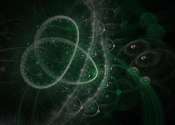Research suggests how turbulence can be used to generate patterns
The turbulent motion of a tumbling river or the outflow from a jet engine is chaotic: that is, it contains no obvious pattern.

The turbulent motion of a tumbling river or the outflow from a jet engine is chaotic: that is, it contains no obvious pattern.
General Physics
Mar 20, 2024
0
109

There are different ideas about how quantum computers could be built. But they all have one thing in common: you use a quantum physical system—for example, individual atoms—and change their state by exposing them to very ...
Quantum Physics
Nov 26, 2023
8
116

Researchers at the University of Warsaw's Faculty of Physics have superposed two light beams twisted in the clockwise direction to create anti-clockwise twists in the dark regions of the resultant superposition. The results ...
Optics & Photonics
Nov 20, 2023
13
513

American-born British theoretical physicist David Bohm made many significant contributions to physics. But he's most famous for challenging convention and interpreting quantum mechanics in terms of nonlocal or hidden variables. ...
Quantum Physics
Nov 8, 2023
2
28

Conservation laws are central to our understanding of the universe, and now scientists have expanded our understanding of these laws in quantum mechanics.

Quantum computers of the future hold promise in solving all sorts of problems. For example, they could lead to more sustainable materials and new medicines, and even crack the hardest problems in fundamental physics. But ...
Quantum Physics
Oct 12, 2023
4
48

Some of our most important everyday items, such as computers, medical equipment, stereos, generators, and more, work because of magnets. We know what happens when computers become more powerful, but what might be possible ...
Condensed Matter
Jul 26, 2023
0
67

Gero, an AI-driven biotech focused on aging and longevity, has demonstrated the feasibility of applying quantum computing for drug design and generative chemistry, which now offers significant promise for the future of healthcare. ...
Biotechnology
Jul 13, 2023
0
61

When we listen to our favorite song, what sounds like a continuous wave of music is actually transmitted as tiny packets of quantum particles called phonons.
General Physics
Jun 8, 2023
0
2314

Artificial intelligence algorithms are quickly becoming a part of everyday life. Many systems that require strong security are either already underpinned by machine learning or soon will be. These systems include facial recognition, ...
Quantum Physics
May 28, 2023
2
69